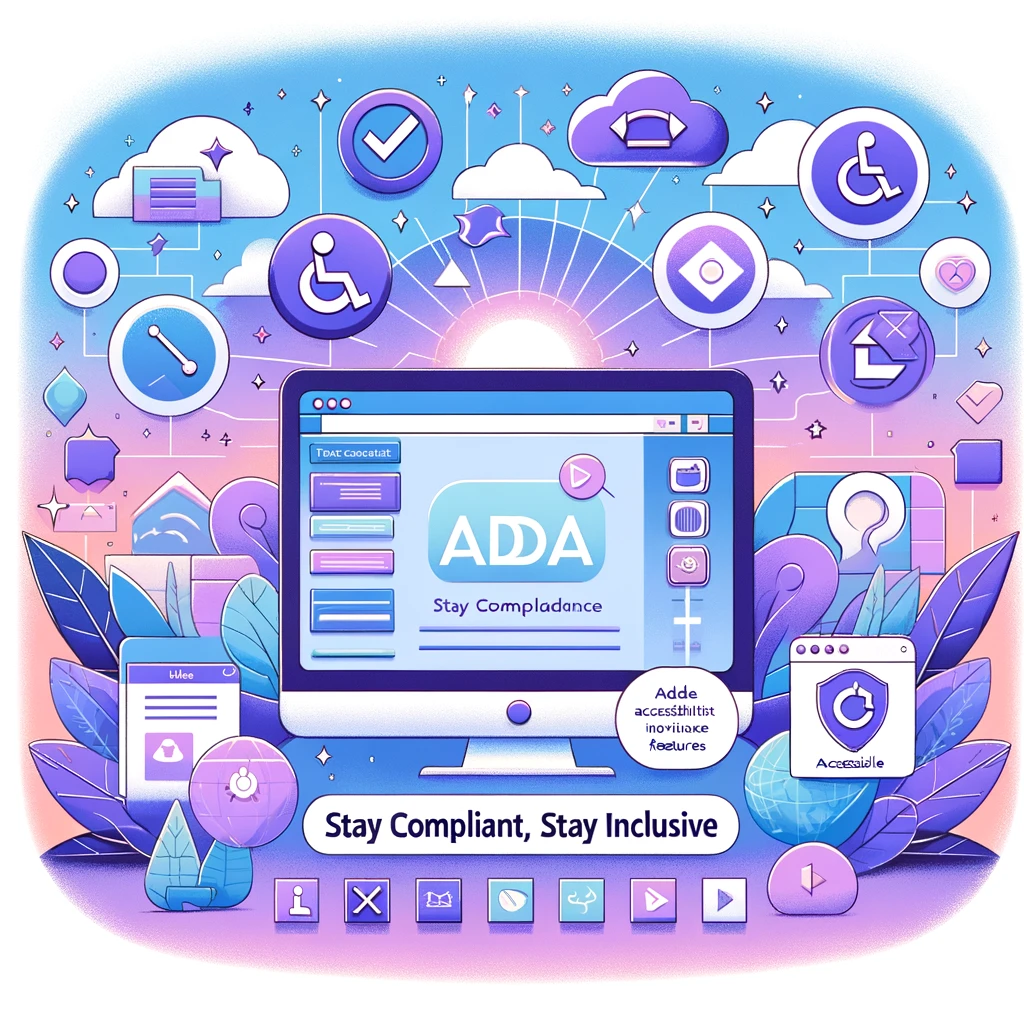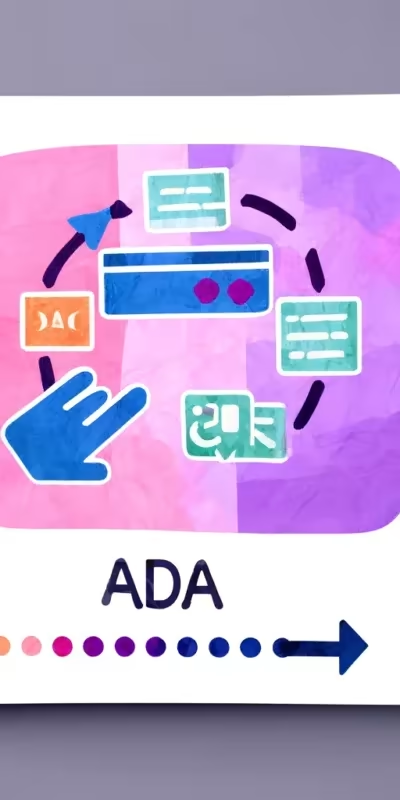Table of Contents
ADA compliance drug rehab website
Introduction
In the digital age, creating a website that’s not only visually appealing but also accessible to everyone is paramount. This is especially true for drug rehab centers, where the online experience can significantly impact the first step towards recovery for many individuals. Ensuring your website adheres to the Americans with Disabilities Act (ADA) guidelines isn’t just about legal compliance—it’s a commitment to inclusivity and providing equal access to all users. Here’s why ADA compliance should be at the forefront of your drug rehab website design and optimization strategy.
Accessibility Is Essential
- Legal Requirements: ADA compliance helps protect your rehab center from potential legal issues. It ensures your website is accessible to people with disabilities, which is a legal requirement in many jurisdictions.
- Broader Reach: By making your website accessible, you’re opening your doors to a wider audience. This includes individuals with various disabilities who can benefit from your services but might be hindered by common web design barriers.
- Improved User Experience: Accessible websites often provide a better user experience for all visitors, not just those with disabilities. Simple navigation, readable fonts, and clear calls to action are beneficial for everyone.
Achieving ADA Compliance
- Evaluate Your Current Website: Use tools and resources to assess how accessible your site currently is and identify areas for improvement.
- Implement Accessibility Features: This includes providing alt text for images, ensuring text is readable against backgrounds, and making sure your site is navigable without a mouse.
- Regular Updates and Maintenance: ADA compliance isn’t a one-time task. As your website evolves, continuously check and update it to remain compliant.
Creating an Inclusive Online Presence
An ADA-compliant website signals to current and prospective clients that your drug rehab center is dedicated to accessibility and inclusivity. It’s not just about avoiding legal pitfalls; it’s about providing a platform that’s welcoming and useful for everyone, reflecting the supportive and healing nature of your services.
Understanding ADA Compliance
Understanding ADA Compliance is crucial for ensuring that your drug rehab website is not only legally compliant but also accessible to everyone, including those with disabilities. The Americans with Disabilities Act (ADA) sets forth guidelines that websites should follow to make their content accessible to individuals with various disabilities. This chapter will delve into what ADA compliance means for online content and how it impacts your drug rehab center’s website.
What is ADA Compliance?
The ADA is a civil rights law that prohibits discrimination against individuals with disabilities in all areas of public life, including jobs, schools, transportation, and all public and private places that are open to the general public. When it comes to online content, ADA compliance means creating website designs and features that individuals with disabilities can access.
Key Components of ADA Compliant Websites
- Text Accessibility: Ensuring that text is readable and understandable for users with disabilities, including those who rely on screen readers.
- Navigability: Making sure that the website can be easily navigated using a keyboard for users who cannot use a mouse.
- Content Alternatives: Providing alternatives for any non-text content, so that users with visual or auditory disabilities can still access the information. This includes alt text for images and transcripts for videos.
- Consistent Layout: Keeping a consistent and predictable layout throughout the website helps users with cognitive disabilities understand and navigate the site more easily.
Why ADA Compliance Matters
- Legal Compliance: ADA compliance helps protect your rehab center from legal complaints and lawsuits.
- Broader Audience Reach: By making your site accessible, you’re ensuring that it can be used by a wider audience, including those with disabilities.
- Improved User Experience: Accessibility features often improve the user experience for all visitors, not just those with disabilities.
Implementing ADA Compliance
Achieving ADA compliance involves several steps, including evaluating your current website for accessibility issues, making the necessary adjustments, and planning for ongoing compliance as your site evolves. It’s advisable to consult with web accessibility experts or use specialized tools to assess and improve your site’s compliance.
Ensuring your drug rehab website meets ADA compliance is not just a legal requirement—it’s a step towards creating a more inclusive and accessible online presence. This commitment to accessibility demonstrates your rehab center’s dedication to serving all individuals seeking help.

Key Elements of Accessible Website Design
Creating an accessible website is not just about compliance; it’s about ensuring that everyone, regardless of their abilities, can access and benefit from your drug rehab center’s online resources. Accessible design is essential for inclusivity, reaching a broader audience, and providing support to those in need. Here are practical design tips for making your drug rehab website accessible to everyone.
- Simplify Navigation: Ensure that your website’s navigation is straightforward and predictable. Use clear, descriptive labels for all links and buttons.
- Use Readable Fonts: Choose fonts that are easy to read across devices and browsers. Avoid using overly decorative fonts that can be difficult to decipher.
- Ensure Text Contrast: Text should have high contrast against its background to be easily readable by people with visual impairments. Tools like the Web Content Accessibility Guidelines (WCAG) can guide you on suitable contrast ratios.
- Provide Alt Text for Images: All images should have alternative text (alt text) descriptions. This allows screen readers to describe images to users who are visually impaired.
- Make Your Site Keyboard-Friendly: Ensure that users can navigate through your site using only a keyboard. This is crucial for people who cannot use a mouse due to physical disabilities.
- Include Closed Captions and Transcripts: For multimedia content like videos, include closed captions for the hearing impaired. Transcripts can also make the content accessible to a broader audience.
- Ensure Compatibility with Assistive Technologies: Design your website to be compatible with various assistive technologies, such as screen readers and magnification tools.
- Test for Accessibility: Regularly test your website with actual users with disabilities to identify and fix any accessibility issues.
Implementing these accessible design elements is not just about adhering to legal requirements; it’s about extending your support to everyone who needs it, ensuring that your drug rehab center’s website is a welcoming place for all visitors.

ADA Guidelines Specific to Drug Rehab Websites
For drug rehab websites, adhering to the Americans with Disabilities Act (ADA) guidelines is not just about legal compliance—it’s a commitment to inclusivity, ensuring that all potential clients can access vital health information and services. The health sector, particularly rehab centers, has unique considerations when it comes to ADA compliance, given the sensitive nature of the content and the diverse needs of their audience. This chapter will explore the ADA guidelines that are especially pertinent to drug rehab websites, offering actionable advice for creating a more accessible online presence.
ADA Guidelines for Drug Rehab Websites
- Text Accessibility: Use clear, simple language that is easy to understand. Provide definitions for medical jargon or rehab-specific terms to make content accessible to everyone.
- Audio and Video Content: Ensure that all multimedia content has accompanying captions or transcripts. This is crucial for users who are deaf or have difficulty processing auditory information.
- Privacy and Security: Since rehab centers deal with sensitive personal information, ensure that your website’s accessibility features also comply with privacy regulations. Include options for users to adjust privacy settings.
- Navigable Content: Structure your website so that information is easy to find. Use headings, lists, and a well-organized menu. Make sure that users can navigate the site using keyboard shortcuts, catering to those who cannot use a mouse.
- Emergency Information: Accessibility for emergency information is critical. Ensure that contact numbers, crisis hotlines, and live chat supports are prominently displayed and accessible.
- Feedback Mechanism: Implement a system where users can provide feedback on the website’s accessibility. This direct line of communication allows for continuous improvement and adaptation to user needs.
By focusing on these specific ADA guidelines, drug rehab centers can create a website that is not only compliant but deeply rooted in the principles of care and support. An accessible website ensures that all individuals, regardless of their abilities, have equal access to life-changing resources.

The Benefits of an Inclusive Online Presence
Ensuring your drug rehab website is ADA compliant brings significant benefits, not just to users who require accessibility features but also to your organization as a whole. By embracing inclusivity, you create an environment where all individuals, regardless of their abilities, have equal access to your services and resources. This chapter explores the multifaceted benefits of maintaining an inclusive online presence.
Benefits for Users
- Equal Access: ADA compliance guarantees that everyone, including people with disabilities, can access your website’s content and services without barriers.
- Enhanced Usability: Features that make a site accessible, like simple navigation and readable fonts, improve the overall user experience for all visitors.
Benefits for Your Organization
- Wider Audience Reach: By removing accessibility barriers, you expand your potential audience, reaching more individuals who can benefit from your services.
- Legal Compliance: Adhering to ADA guidelines protects your organization from potential legal issues related to accessibility.
- Positive Brand Perception: Demonstrating a commitment to inclusivity can enhance your brand’s reputation, showing that you value all individuals’ rights to access and information.
- SEO Improvements: Many accessibility practices, such as using alt text for images and ensuring your site is navigable by keyboard, also improve your site’s SEO, making it more visible to search engines.
Implementing ADA Compliance
Achieving ADA compliance involves a commitment to ongoing evaluation and adaptation of your website. It means regularly auditing your site for accessibility issues, engaging with users to gather feedback on their experiences, and continuously educating your team on the importance of inclusivity.

Success Stories: ADA-Compliant Drug Rehab Websites
In the world of digital accessibility, ADA-compliant websites stand as beacons of inclusivity and user-centric design. The drug rehab sector, with its unique requirements for sensitivity and privacy, presents both challenges and opportunities in web design. This chapter highlights real-world examples of drug rehab centers that have successfully optimized their websites for ADA compliance, demonstrating the transformative impact of such initiatives on their operations and the communities they serve.
Case Study 1: The Comprehensive Accessibility Overhaul
A regional drug rehab center undertook a comprehensive review of its website to identify accessibility barriers. They implemented text-to-speech functionality, added descriptive alt text to all images, and ensured keyboard navigability across all pages. Post-optimization, the center reported a 35% increase in online inquiries, showcasing the effectiveness of their accessibility improvements.
Case Study 2: Leveraging User Feedback for Continuous Improvement
Another facility used user feedback to drive their website’s accessibility improvements. By setting up a feedback loop with site visitors, they were able to pinpoint specific areas where users with disabilities faced difficulties. Implementing changes based on this feedback not only enhanced the user experience for individuals with disabilities but also increased the website’s overall user satisfaction rates.
Case Study 3: Accessibility as Part of Brand Identity
One rehab center decided to make accessibility a core part of its brand identity. By promoting their commitment to inclusivity through their ADA-compliant website, they attracted a wider audience, including advocacy groups and individuals looking for rehab services that consider diverse needs. This approach not only improved their service reach but also positioned them as a leader in accessible healthcare services.
The Impact of ADA Compliance
These success stories highlight the tangible benefits of ADA compliance, from increased engagement and a broader audience reach to enhanced brand reputation and leadership in accessible healthcare. They serve as powerful examples for other drug rehab centers considering similar optimization efforts.
Step-by-Step Guide to Implementing Accessibility Features
Implementing accessibility features on your drug rehab website is a critical step towards inclusivity, ensuring that all potential clients, regardless of their abilities, can access your services and resources. This chapter provides a step-by-step guide to making your website ADA-compliant, focusing on practical and actionable instructions.
Step 1: Conduct an Accessibility Audit
- Utilize tools like WAVE or the AXE browser extension to assess your website’s current accessibility level. Identify areas that need improvement.
Step 2: Create a Plan
- Based on the audit results, prioritize the changes needed. Consider starting with quick wins, like alt text for images, that have an immediate impact.
Step 3: Implement Text Alternatives
- For all images, videos, and non-text content, provide text alternatives (alt text) that describe the purpose of the content.
Step 4: Ensure Site Navigation via Keyboard
- Make sure all site functions can be navigated using a keyboard. This includes accessing all pages, links, content, and so forth.
Step 5: Make Text Content Readable and Understandable
- Use clear, simple language and ensure text contrast meets or exceeds the recommended ratio of 4.5:1 for normal text.
Step 6: Create Content That Can Be Presented in Different Ways
- Ensure your site’s layout is flexible and content can be accessed with various devices and browsers without losing information.
Step 7: Ensure Users Can Easily Navigate and Find Content
- Use clear headings, labels, and not rely solely on color for conveying information.
Step 8: Regular Testing and Feedback
- Regularly test your website with users of varying disabilities to gather feedback on usability. Adjust as necessary.
Step 9: Continuous Improvement
- Web accessibility is an ongoing effort. Keep abreast of new guidelines and technologies that can enhance accessibility.
Step 10: Consult with Experts
- If possible, consult with accessibility experts to ensure that your website meets all necessary standards and provides a genuinely inclusive user experience.
Creating an ADA-compliant website for your drug rehab center is an essential step towards inclusivity, ensuring that your vital services are accessible to everyone. By following these steps, you can significantly improve your website’s accessibility, making a positive impact on your audience and your organization’s reach.
Tools and Resources for Ensuring Compliance
To ensure your drug rehab website is accessible and ADA-compliant, leveraging the right tools and resources is crucial. This chapter provides an overview of software and resources designed to assess and enhance website accessibility, helping you meet ADA guidelines and create a more inclusive digital environment.
Accessibility Evaluation Tools
- WAVE (Web Accessibility Evaluation Tool): Offers a visual representation of potential accessibility issues on your website.
- AXE Chrome Plugin: Integrates directly into your web browser, allowing you to test web pages for accessibility issues with ease.
- Google Lighthouse: An open-source, automated tool that includes audits for accessibility, providing scores and recommendations for improvement.
Screen Readers for Testing
- NVDA (NonVisual Desktop Access): A free and open-source screen reader for Windows that is widely used for accessibility testing.
- VoiceOver: Built into all Mac and iOS devices, this screen reader is essential for testing accessibility on Apple products.
Color Contrast Analyzers
- Color Contrast Analyzer: A tool that helps you determine the legibility of text and the contrast of visual elements.
- WebAIM Color Contrast Checker: An online tool that checks color contrast as per WCAG 2.1 guidelines.
Accessibility Management Platforms
- Siteimprove Accessibility Checker: Provides a comprehensive dashboard for monitoring and improving website accessibility.
- AudioEye: Offers a combination of automated technology and professional expertise to ensure your website meets ADA standards.
Guidelines and Best Practices
- Web Content Accessibility Guidelines (WCAG): The primary document detailing the requirements for accessibility.
- ADA.gov: Offers guidance on ADA compliance for businesses and public entities, including those operating drug rehab centers.
Using these tools and resources can significantly ease the process of making your website ADA-compliant. However, remember that technology is only part of the solution. A commitment to ongoing learning, user testing, and adaptation is key to maintaining an accessible website.
Ensuring your website’s accessibility is not just about meeting legal requirements; it’s about extending your support to all individuals, making it easier for them to access vital drug rehab services online.
Conclusion
Ensuring your drug rehab website is ADA-compliant is more than a regulatory requirement; it’s a reflection of your commitment to inclusivity and accessibility for all individuals seeking support. Throughout this guide, we’ve outlined the essential steps and resources necessary to achieve a user-friendly, engaging, and compliant online presence. This commitment not only broadens your reach to those in need but also strengthens your reputation as a caring, accessible service provider in the drug rehab sector.
Recap of Key Points
- Importance of ADA Compliance: Compliance is crucial for legal reasons, enhancing user experience, and ensuring your services are accessible to everyone, including those with disabilities.
- Steps to Achieve Compliance: Starting with an accessibility audit, implementing recommended changes, and engaging in continuous improvement are vital steps.
- Tools and Resources: Leveraging tools like WAVE, AXE Chrome Plugin, and consulting WCAG guidelines help maintain compliance.
- Benefits: Beyond compliance, the benefits include a wider audience reach, improved SEO, and a positive brand image.
ADA compliance is not a one-time effort but an ongoing commitment to accessibility and inclusivity. By embracing these practices, your drug rehab center can ensure that its website serves as a welcoming and supportive resource for all visitors, regardless of their abilities.
As we conclude, remember that ADA compliance is a journey that reflects your commitment to serving all community members with dignity and respect. It’s about removing barriers and creating a welcoming digital space for individuals seeking support in their recovery journey.
Questions You Might Ponder
Why is ADA compliance crucial for drug rehab websites?
ADA compliance is vital for drug rehab websites because it ensures that the site is accessible to all users, including those with disabilities. This inclusivity is not only a legal requirement but also extends the reach of the website to a wider audience, ensuring that everyone can access vital rehab services and information without barriers.
What are some key features of an ADA-compliant website?
Key features of an ADA-compliant website include text accessibility for screen readers, keyboard navigability for those who can’t use a mouse, content alternatives like alt text for images and captions for videos, and a consistent, predictable layout that helps users with cognitive disabilities navigate the site more easily.
How can drug rehab centers achieve ADA compliance?
Drug rehab centers can achieve ADA compliance by first evaluating their current website for accessibility issues, then implementing necessary changes such as adding alt text for images, ensuring text contrasts are sufficient, and making the website navigable by keyboard. Regular updates and maintenance are also crucial to stay compliant as the website evolves.
What are the benefits of an inclusive online presence for drug rehab centers?
An inclusive online presence benefits drug rehab centers by broadening their audience reach, protecting against legal issues, and improving the overall user experience for all visitors. It also enhances the center’s brand reputation as a caring and accessible service provider, positively impacting both users and the organization.
How does ADA compliance impact website design and user experience?
ADA compliance impacts website design and user experience by necessitating features that make the site accessible to everyone. This includes readable fonts, clear navigation, and content that’s accessible through various means, such as text alternatives for non-text content. These features not only benefit users with disabilities but also enhance the overall user experience for all site visitors.
Are there specific ADA guidelines for drug rehab websites?
While the ADA guidelines apply broadly across all websites, drug rehab websites must pay particular attention to features that support their audience’s unique needs, such as privacy considerations for sensitive information and ensuring emergency information is prominently accessible. Tailoring accessibility efforts to the specific content and services offered can further improve the site’s usability and effectiveness.
How can drug rehab centers maintain ADA compliance over time?
Maintaining ADA compliance over time requires regular audits of the website, continuous learning about new accessibility guidelines and technologies, and adapting the site based on user feedback and evolving standards. Engagement with web accessibility experts and the use of specialized tools can aid in this ongoing effort to ensure the website remains accessible and compliant.
Is your drug rehab center’s website a beacon of accessibility? Let’s ensure it embodies our commitment to providing equal access for everyone.

